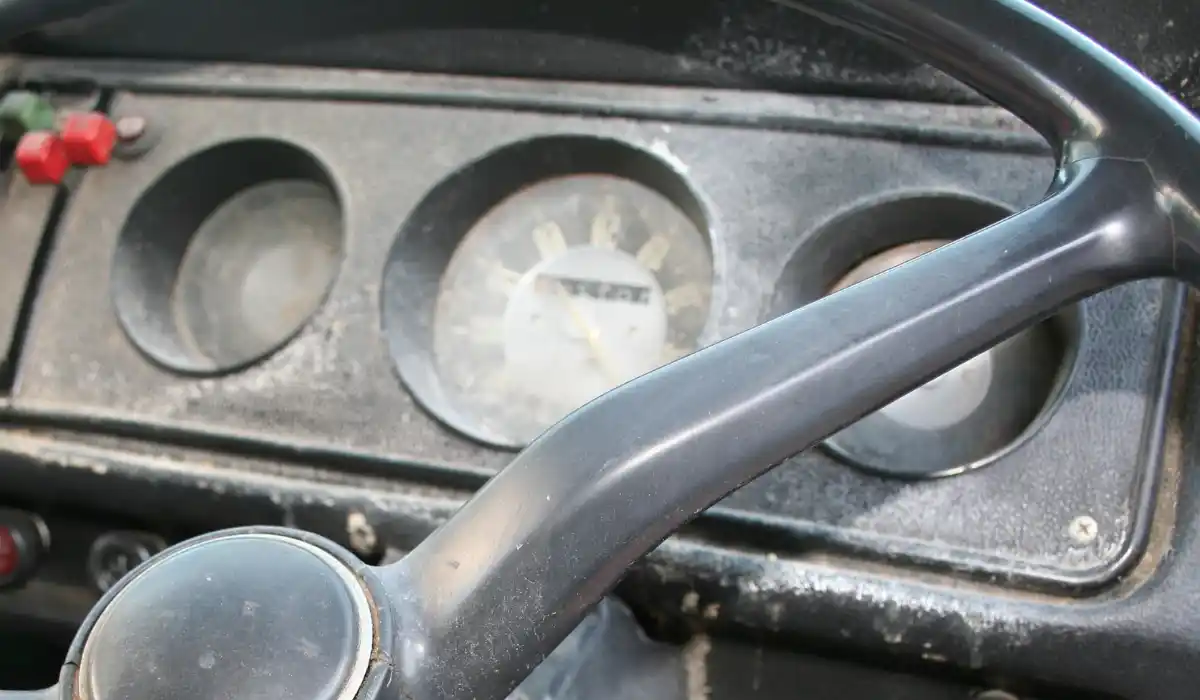Has your speedometer glass developed an annoying foggy or hazy film over time? Restoring clarity to the glass not only improves visibility while driving, but makes your dashboard look cleaner too.
With some patience and the proper polishing technique, you can safely remove foggy speedometer glass without damaging it.
Jump Ahead To:
What Causes Foggy Speedometer Glass?
Small scratches in the plastic lens from dirt or abrasive cleaners allow a hazy film to build up over time. Oil and grease residues can also leave behind a stubborn foggy layer that accumulates gradually.
What You’ll Need
- Microfiber cloth – Use a supremely soft cloth designed for polishing and scratch removal.
- Plastic polish – An effective polish specifically formulated for use on plastics, like Meguiar’s PlastX, is ideal for removing foggy film.
That’s it! With just a microfiber cloth and polish, you can restore optical clarity. Harsh cleaners and abrasive pads should be avoided as they can scratch the glass.
Polishing Steps
Follow these steps to gently polish away foggy haze:
1. Prepare the Glass
Wipe any loose dust or dirt off the speedometer glass with a dry microfiber cloth first. This prevents particles from scratching during polishing.
2. Apply PlastX Polish
Put a dime-sized amount of PlastX on your cloth. Use gentle circular motions to work the polish into the glass. The polish will start breaking down the foggy film.
3. Polish the Glass
Continue polishing, frequently rotating your cloth to expose clean sides. Check often to see if the haze is diminishing. Add more polish as needed. Be patient and persistent here, but never scrub aggressively. It may take 15-20 minutes to fully clear the fogginess.
4. Remove Polish Residue
Once satisfied with the clarity, use a clean microfiber to remove any leftover polish residue and buff the glass.
5. Consider Applying a Protectant
For added protection, apply a plastic-safe sealant to repel future fogging like Zeiss Fog Defender spray.
Be Patient and Gentle
With the proper polishing technique, PlastX, and a supremely soft cloth, you can banish foggy speedometer glass.
Just remember to let the polish do the work. Never scrub harshly or use abrasive cleaners. Consistent, gentle polishing over time will restore optical clarity and keep your view of the gauges crystal clear.
When to Seek Professional Help
If you have thoroughly cleaned the exterior speedometer glass using these steps and recommendations but the fogging persists, the cause may be internal moisture or seal failure inside the speedometer housing.
In that case, you will need to consult a professional auto repair shop to properly disassemble and restore the speedometer internals.
Signs that the fogginess is internal include:
- Fogging quickly returns after cleaning the exterior glass
- Fogginess is present even when the car is fully warmed up
- Condensation can be seen inside the glass from certain angles
FAQs
What if the fogginess comes back quickly?
If the hazy film returns shortly after cleaning, moisture is likely penetrating the speedometer housing. Consult an auto repair shop to check the housing seal and prevent repeat fogging issues.
Can I use toothpaste or baking soda?
Avoid abrasive pastes or powders as they can scratch the plastic lens. Use a polish specifically formulated for use on plastics.
How can I prevent future fogging?
After polishing, apply a plastic protectant or anti-fog coating to repel moisture. Keeping the interior dry also helps prevent condensation buildup.
Is it safe to use Windex or glass cleaner?
Do not use glass cleaners, as they can damage plastic components. Always use a plastic-safe polish.
Can I polish the glass while installed?
Yes, you can safely polish the speedometer glass without removing it, as long as you use minimal pressure and soft cloths to prevent scratching.
Will polishing remove deep scratches?
Light polishing may reduce the appearance of fine scratches but likely won’t eliminate deep grooves or pits in the glass. Avoid introducing new scratches.



